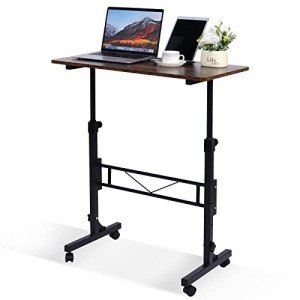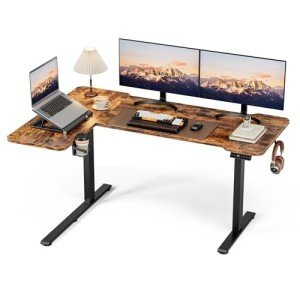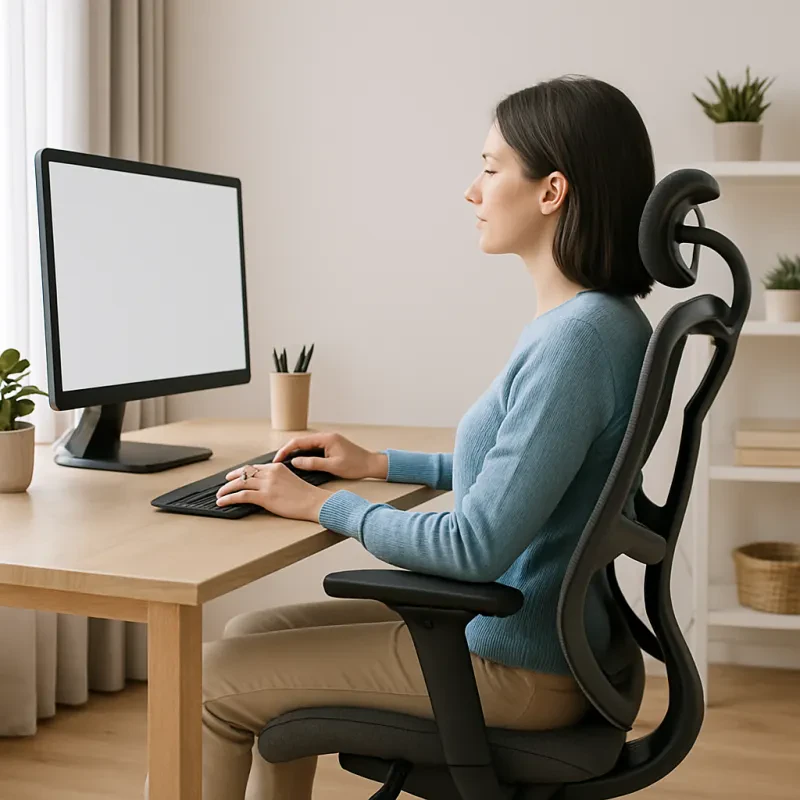In today's world, where remote work is more common than ever, setting up a home office that promotes health and efficiency is key. Enter the standing desk—a versatile piece of furniture that's revolutionizing how we approach our daily grind. If you're looking to shake up your workspace, this comprehensive guide will explore the myriad benefits of standing desks, backed by recent insights and practical advice. We'll cover everything from physical health perks to mental boosts, and emphasize the importance of switching between sitting and standing for optimal results. Whether you're a seasoned remote worker or just starting out, discover how a standing desk can elevate your home office experience.
Understanding Standing Desks
At its core, a standing desk is a height-adjustable workstation that lets you alternate between sitting and standing positions effortlessly. Gone are the days of being tethered to a chair; modern standing desks often feature electric motors for smooth adjustments, mobility options like wheels, and even built-in storage such as drawers. Designs range from compact models ideal for smaller spaces to expansive L-shaped setups that provide ample room for multiple monitors and accessories.
The appeal lies in their adaptability. In a home office, where space and functionality matter, a standing desk can transform a corner of your living room into a dynamic hub. It's not just about standing—it's about creating a setup that encourages movement and supports your body's natural needs throughout the workday.
The Health Benefits of Standing While Working
Standing desks aren't just a fad; they're supported by a growing body of research highlighting their role in combating the ills of sedentary lifestyles. Let's break down some of the standout health advantages.
Enhanced Posture and Pain Relief
One of the most immediate benefits is improved posture. When you stand, your spine naturally aligns in an "S" shape, reducing strain on your back and neck. Prolonged sitting often leads to slouching, which can cause chronic pain. Studies show that using a standing desk can significantly reduce lower back pain and body aches by promoting better alignment and engaging core muscles. For home office users, this means fewer trips to the chiropractor and more comfortable days at the desk.
Additionally, standing desks help alleviate neck and shoulder discomfort. By adjusting the desk height to keep your screen at eye level, you avoid the forward head posture that comes from hunching over a laptop. Users often report feeling less tension after making the switch.
Boosted Circulation and Cardiovascular Health
Sitting for hours slows blood flow, increasing risks for heart disease and blood clots. Standing, on the other hand, promotes better circulation by keeping you upright and encouraging subtle movements. Research indicates that incorporating standing into your routine can lower the risk of cardiovascular issues and even Type 2 diabetes by improving insulin resistance.
In a home office, where you might not have the built-in activity of commuting, this is particularly valuable. Standing desks can also reduce swelling in the legs and ankles, making your workday feel less draining.
Weight Management and Metabolic Benefits
Standing burns more calories than sitting—around 50 extra per hour—which adds up over time to help manage weight and reduce obesity risks. Beyond calories, standing encourages micro-movements like shifting weight or stretching, which keep your metabolism active. Studies link reduced sedentary time to lower chances of metabolic syndromes, including diabetes.
For those working from home, pairing a standing desk with light activities, such as pacing during calls, can amplify these effects without needing a gym membership.
Potential Longevity Gains
Emerging research suggests that standing desks might contribute to a longer life by mitigating risks associated with prolonged sitting, such as heart disease and certain cancers. While not a miracle cure, reducing sedentary behavior is linked to improved overall health outcomes, potentially extending lifespan.
Mental and Productivity Perks
Standing desks don't just benefit your body—they can sharpen your mind too.
Increased Energy and Mood
Standing enhances blood flow, delivering more oxygen to your brain and muscles, which combats fatigue and boosts energy levels. A 2022 study noted improvements in mood and reduced tiredness among users. In a home office, this translates to fewer afternoon slumps and a more positive outlook on your tasks.
Users often feel more vibrant and less monotonous, with standing acting as a natural mood enhancer through endorphin release.
Sharper Focus and Productivity
Switching to standing can provide a mental reset, improving focus and cognitive function. Research shows benefits for productivity, especially for those with ADHD, by reducing sedentary-induced fog. Standing during creative tasks or meetings can spark better engagement and output.
In home settings, this flexibility helps maintain momentum, leading to more efficient workdays.
The Importance of Alternating Positions
The true strength of standing desks lies in alternation. Standing all day can lead to leg fatigue, just as sitting can cause stiffness. Aim for a balance, like 15-30 minutes standing per hour, adjusting based on your comfort.
This approach maximizes benefits while minimizing drawbacks, keeping muscles engaged and preventing strain. Electric desks with presets make switching seamless.
Tips for Effective Alternation
-
Start slow: Begin with short standing intervals and build up.
-
Listen to your body: Sit if tired, stand if stiff.
-
Incorporate movement: Use breaks for walks or stretches.
-
Ergonomic setup: Ensure proper heights for both positions.
Integrating a Standing Desk into Your Home Office
Choosing the right desk involves considering space, features, and needs— from mobile units to L-shaped models with storage.
Pair with accessories like anti-fatigue mats, monitor arms, and ergonomic chairs for full support. Personalize with plants or lighting to make it inviting.
Debunking Myths and Addressing Concerns
Myth: Standing is always better. Reality: Balance is key to avoid fatigue.
Myth: They're only for the fit. Anyone can benefit with gradual adoption.
Concerns like cost are offset by long-term health savings.
User Stories and Real-World Insights
Many report transformed workdays: less pain, more energy, better focus. For deeper dives, see Comfy Home Office's “The Benefits of Using a Standing Desk: Why You Should Make the Switch” or “Standing Desk vs. Sitting: How to Find the Right Balance for Productivity”.
Is a Standing Desk for You?
If you're seeking a healthier, more productive home office, yes! Explore options on Comfy Home Office, from electric to mobile designs. Start experimenting—your well-being will improve.
References
-
Cleveland Clinic. (2025). 6 Benefits of Standing Desks. Retrieved from https://health.clevelandclinic.org/benefits-of-standing-desks
-
BTOD.com. (2025). 7 Health Benefits of a Standing Desk in 2025. Retrieved from https://www.btod.com/blog/health-benefits-standing-desk/
-
UPLIFT Desk. (n.d.). Benefits of a Standing Desk. Retrieved from https://www.upliftdesk.com/benefits-of-a-standing-desk/
-
Humanscale. (n.d.). Standing Desk Benefits for Better Health and Productivity. Retrieved from https://www.humanscale.com/insights/standing-desk-benefits-for-better-health-and-productivity-
-
Comfy Home Office. (n.d.). The Benefits of Using a Standing Desk: Why You Should Make the Switch. Retrieved from https://comfyhomeoffice.com/articles/the-benefits-of-using-a-standing-desk-why-you-should-make-the-switch
-
Comfy Home Office. (n.d.). Standing Desk vs. Sitting: How to Find the Right Balance for Productivity. Retrieved from https://comfyhomeoffice.com/articles/standing-desk-vs-sitting-how-to-find-the-right-balance-for-productivity







